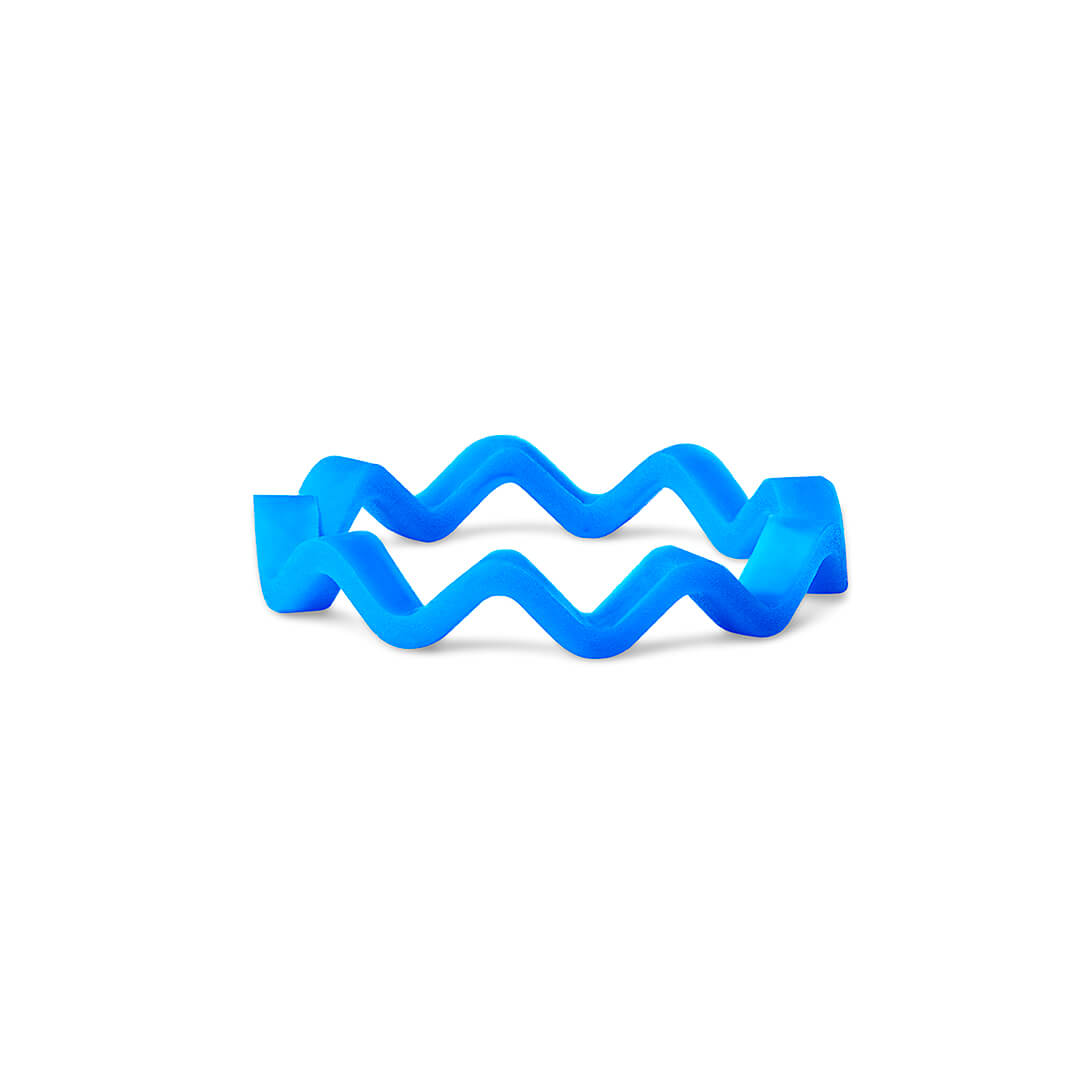Features
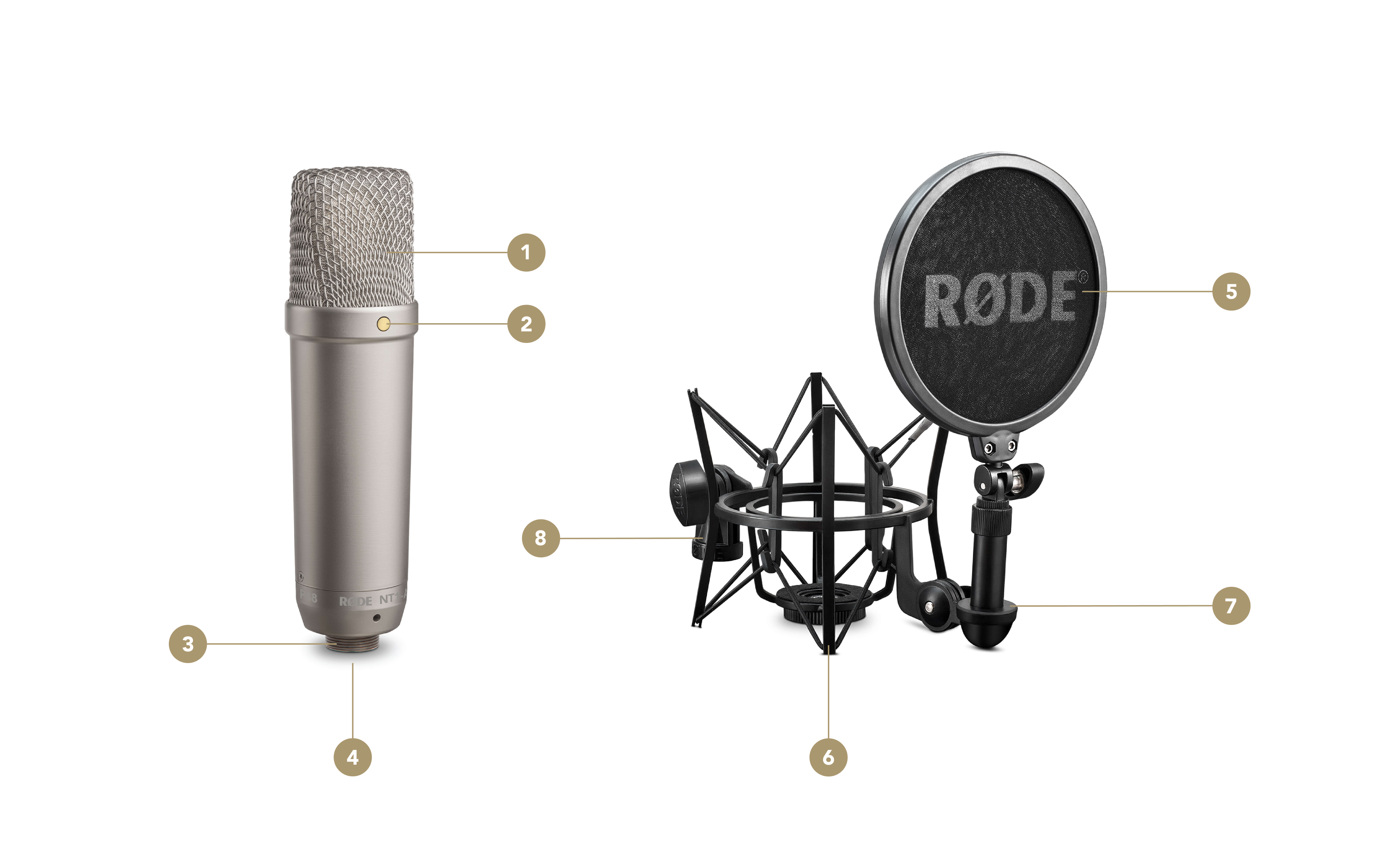
1Large-diaphragm (1")
Gold-sputtered Capsule
2Gold Dot Indicating Front of Microphone
3Screw Thread
4XLR Connector
5Pop Filter
6SM6 Shock Mount
7Pop Filter Mounting Arm
8Microphone Stand Mount
Studio Workhorse
The NT1-A is an incredibly versatile microphone for studio recording and other applications. It features a 1-inch gold-sputtered capsule and delivers a wide frequency response with rich bass articulation and sparkling top end, high SPL (sound pressure level) handling capabilities, and ultra-low self-noise (just 5dBA) making it a true studio workhorse.
Pickup Pattern and Placement
The NT1-A is a side-address microphone and features a tight cardioid polar pattern. This means it will pick up sound perpendicular to, and in front of, the body of the microphone, while rejecting sounds behind it. The gold dot on the body of the NT1-A indicates the front of the microphone. Always make sure that this is pointed towards your sound source.
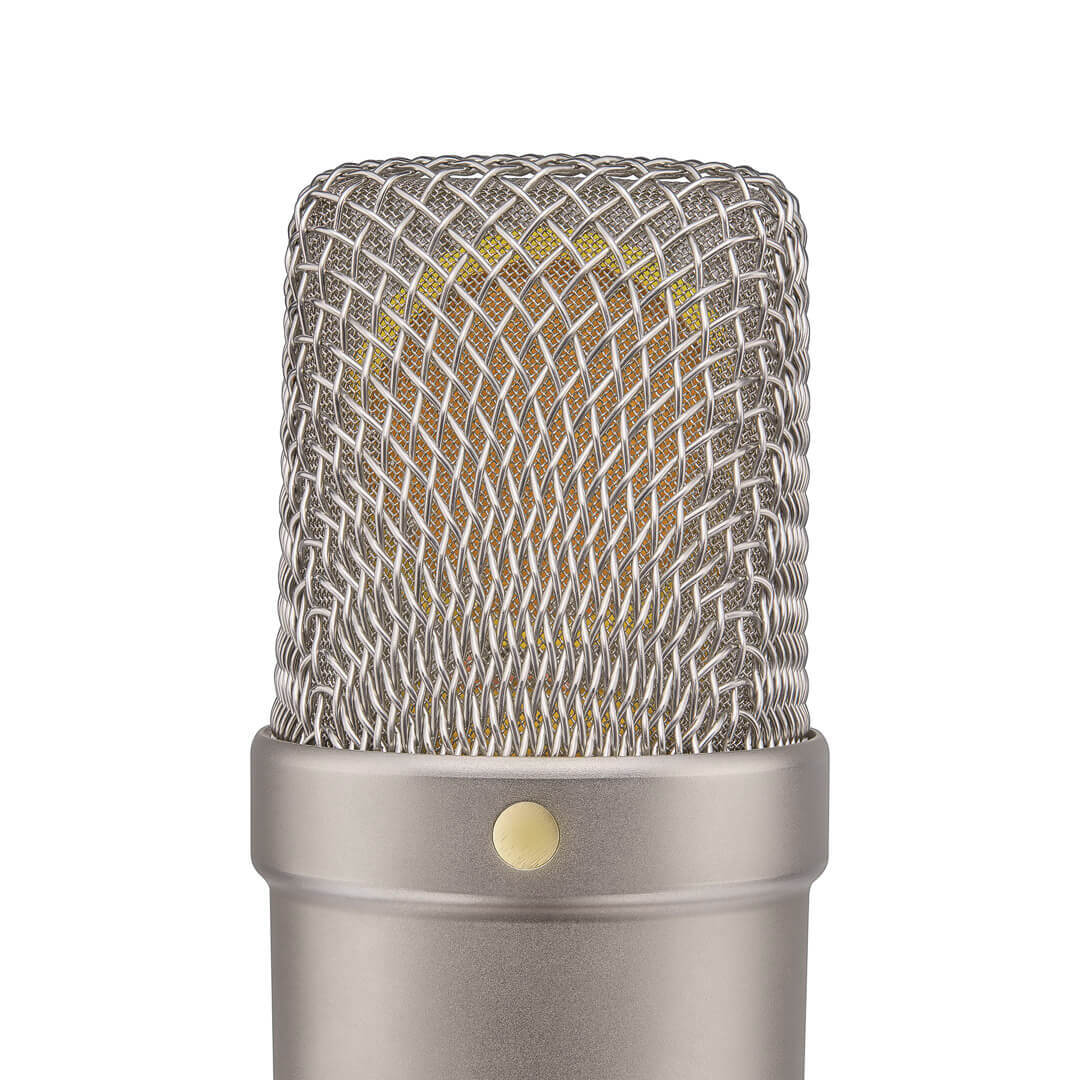
Getting Set Up
The NT1-A comes with all the accessories you need to get recording, including a studio-quality shock mount, pop filter, XLR cable and dust cover.
Using the Shock Mount
The SM6 shock mount and pop filter provides excellent isolation from unwanted sounds produced by external bumps and other movement, as well as plosives (puffs of air from your mouth that can overload the capsule). It can be attached to any standard microphone stand or studio arm, either upright or upside down. The mount features both 5/8” and 3/8” thread sizes.
Attaching the Pop Filter
To place the pop filter on the shock mount, loosen the joint on the ‘L’-shaped bracket with the rounded base so that its threaded socket faces up. Screw the pop filter into this socket until firmly secured. Once in place, the height of the pop filter can be adjusted using the telescopic arm, as well as its left-to-right orientation and back-and-forth tilt.
Mounting the NT1-A
Place the NT1-A inside the SM6 shock mount and rotate the microphone clockwise to screw it loosely into the base of the mount. Adjust the orientation of the microphone so that the gold dot faces the pop filter, and then tighten the ring beneath the mount while holding the microphone to secure it in place.
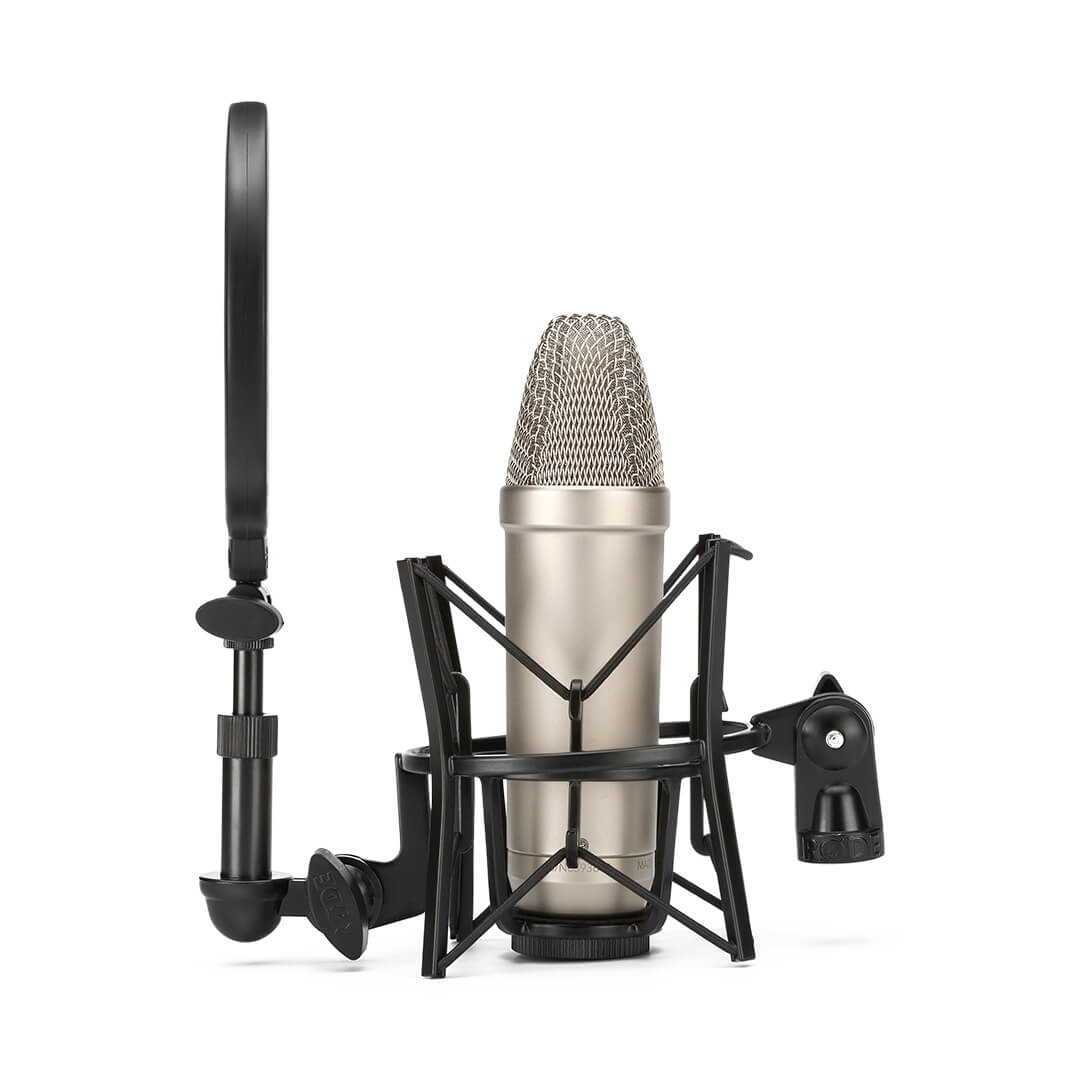
Connecting Your NT1-A
Once you’ve mounted your NT1-A, plug the female end of your XLR cable (three holes) into the base of the microphone (three pins). Before connecting the other end of the cable to your mixer, audio interface or similar device, ensure the input volume is fully down to avoid unexpected feedback or loud sounds.
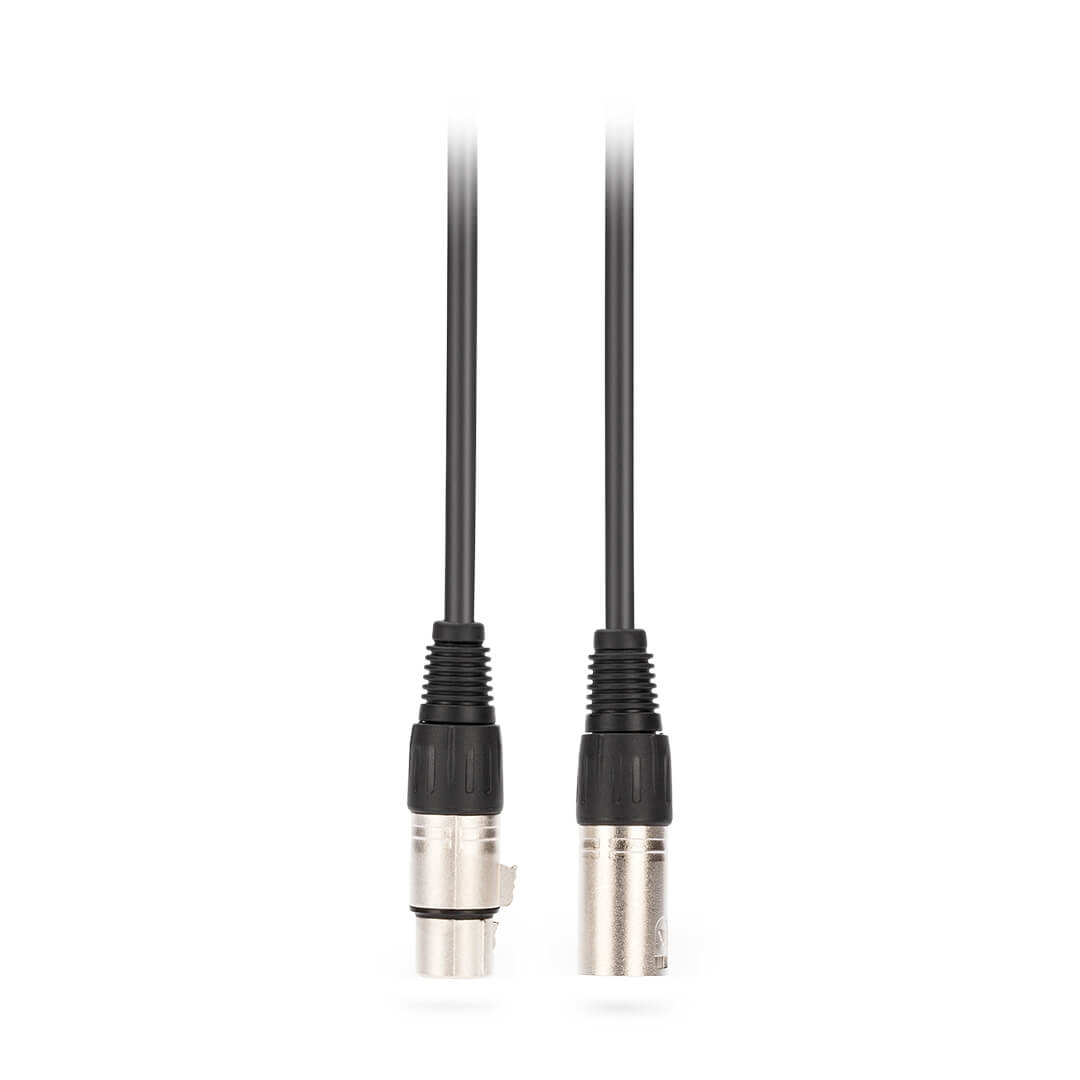
Powering Your NT1-A
For the NT1-A to function, you’ll need to supply 48V phantom power. This provides power to components inside the microphone. Most mixers, audio consoles and audio interfaces like the AI-1 (pictured) are capable of providing phantom power, which is supplied to the mic via an XLR cable. In most cases, you will need to activate it via your device, as not all microphones require this power.
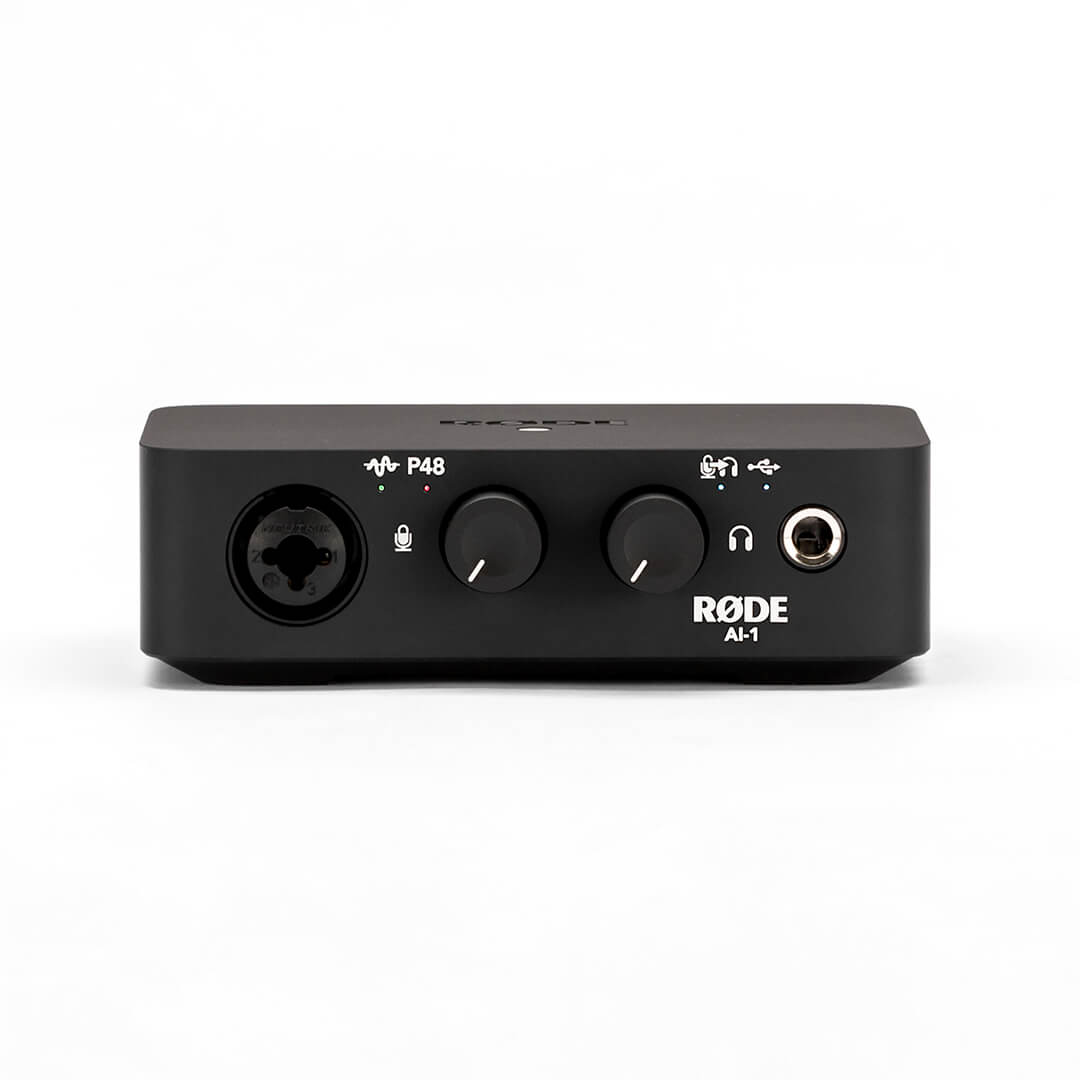
Using the Blue Ring
The NT1-A comes with a small blue rubber plastic ring. This is useful when using a microphone cable that doesn’t snugly fit into the XLR connector. Simply place the ring into the XLR socket, then push it into place with a cable. This will ensure a tight fit with any cable.
